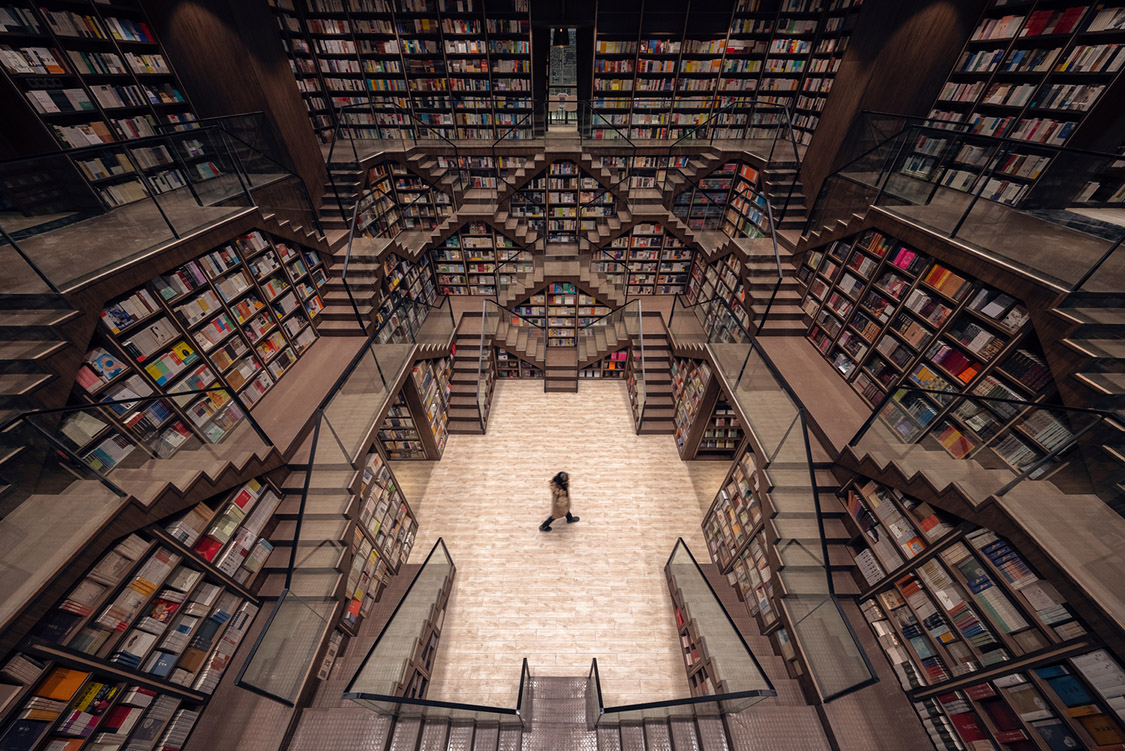
It seems that nearly every week, we discover another massive, new bookstore somewhere in China.
Their size would represent mindboggling square-footage in any retail category, but it is even more amazing that this kind of growth is happening in bookstores.
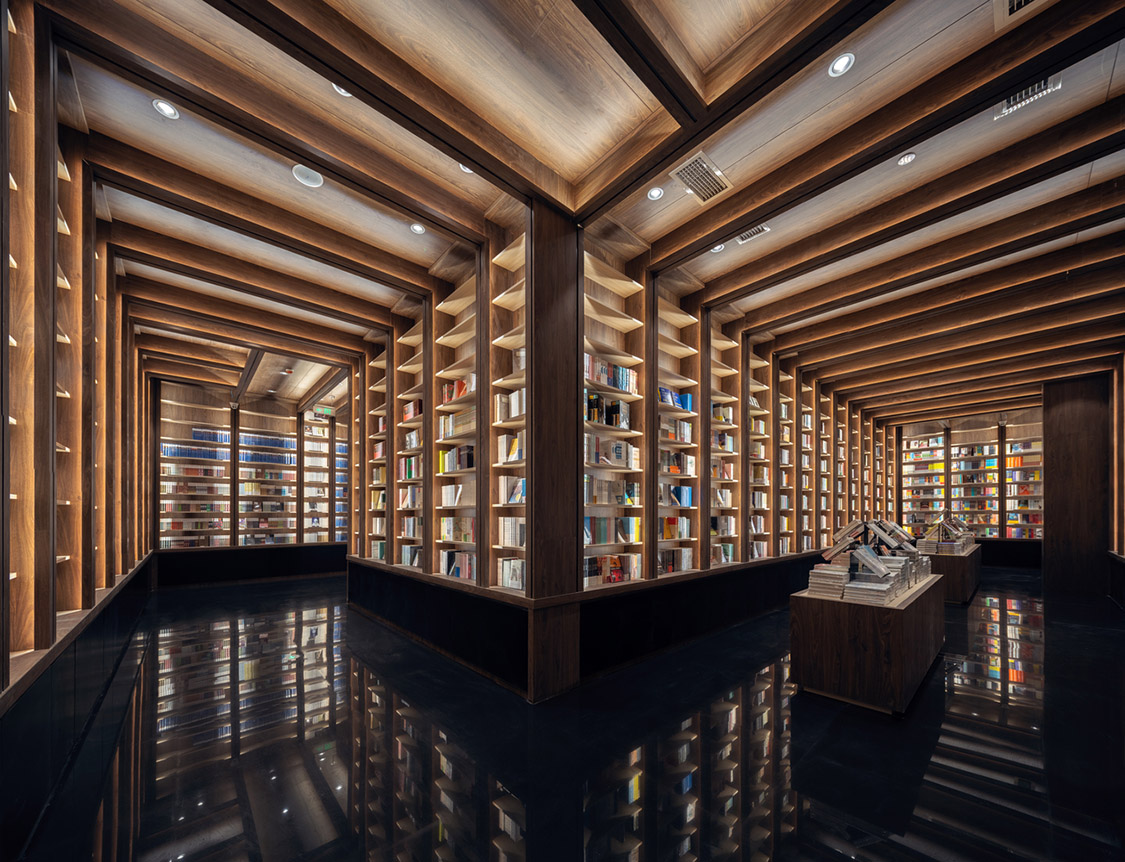
Isn』t it a known fact that bookstores are a dying breed? And nobody reads physical books any more, and everyone buys their books online.
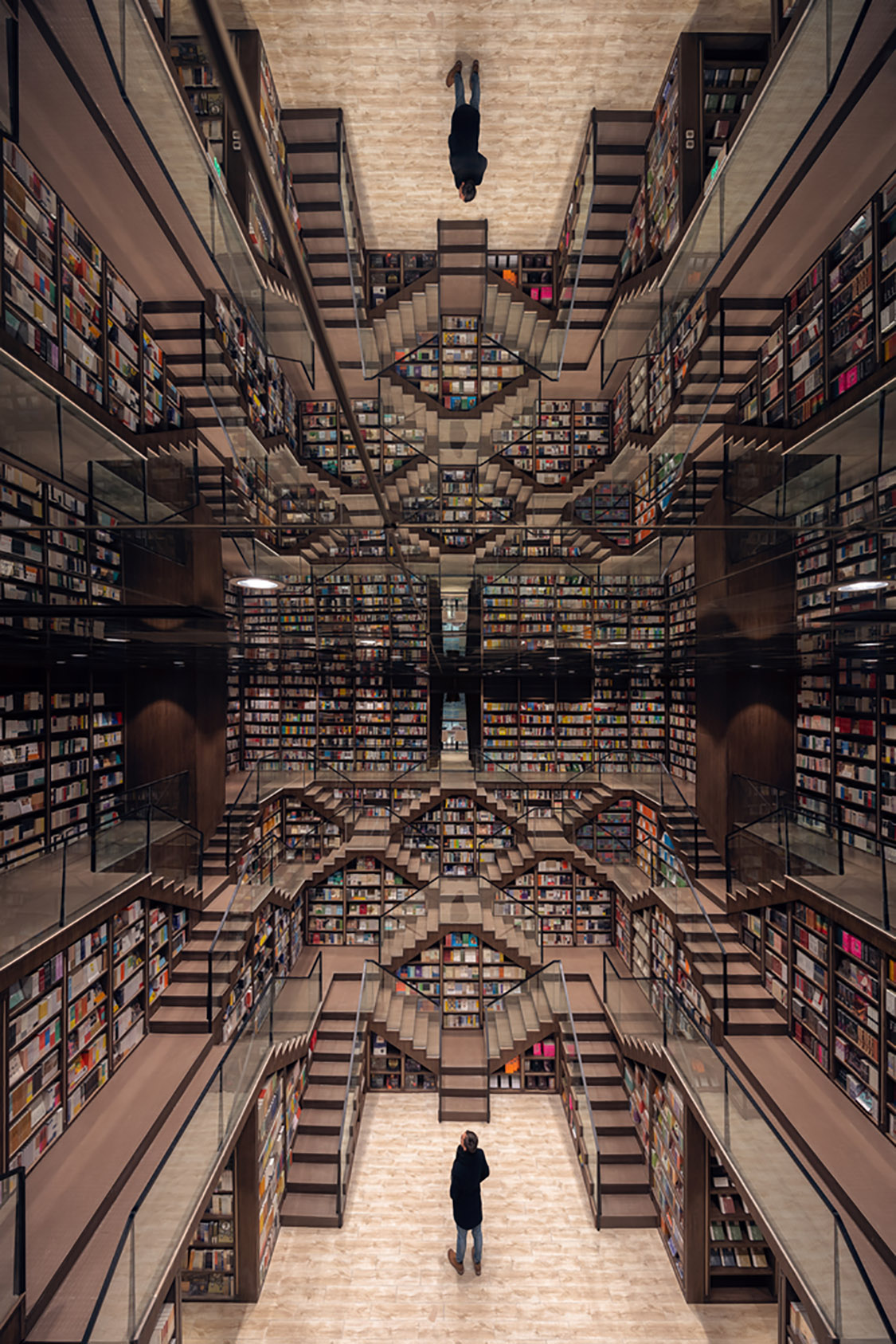
Clearly, these statements do not hold true in China, or the retail rent and profit structures are so different from the typical western models that this type of large-scale 「Promote Reading of Physical Books」 assault is actually profitable. Or, perhaps the goal of these stores is purely educational and not retail profit.
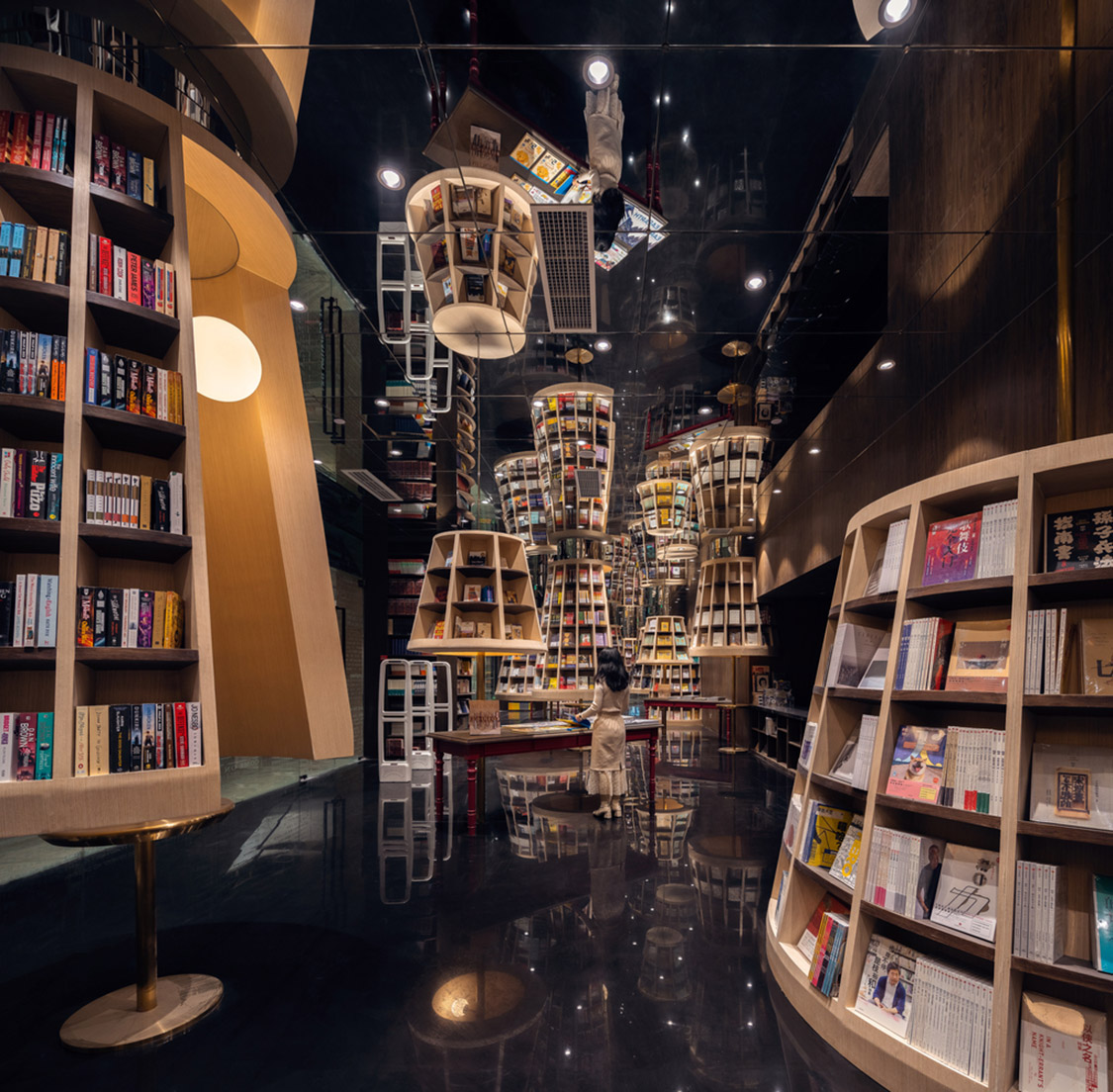
Whatever the goal, this phenomenon is bringing forth a fantastical series of enormous stores.
We have featured several of the Shanghai Zhongshu Industrial Ltd.』s megastores previously, most of them designed by their go-to design firm, the Shanghai-based X+living.
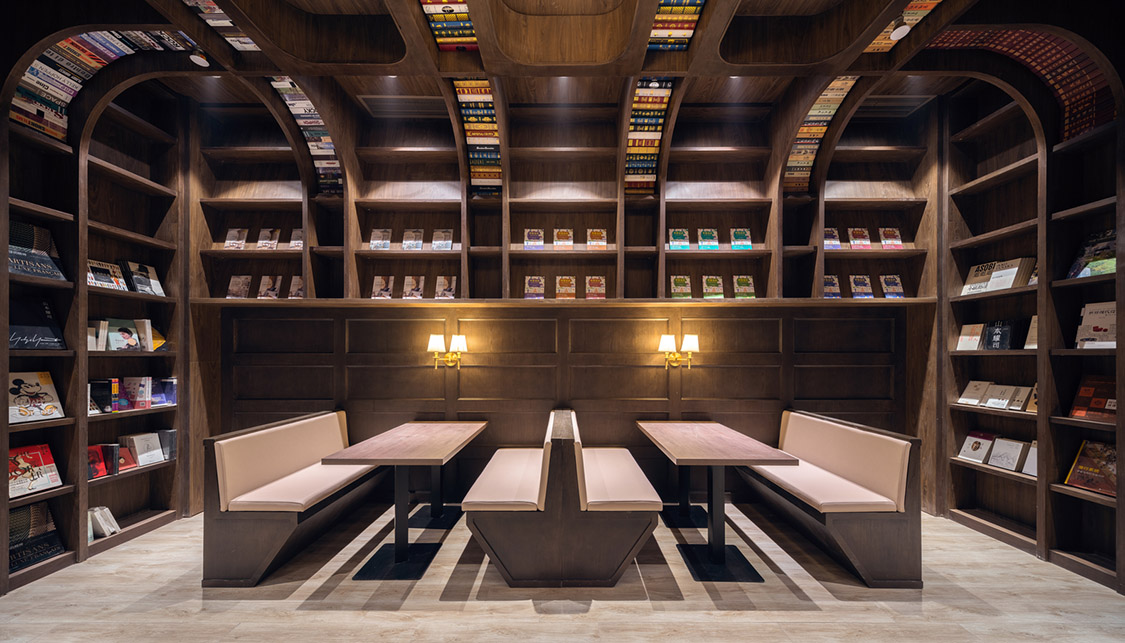
This 1,300 square-meter (approx. 14,000 sq.ft) store on four levels is located in the Zodi Plaza completed in 2016 in Chongqing. With its 30-million-plus inhabitants, the southwestern Chinese industrial city certainly has the population base for profitable retail.
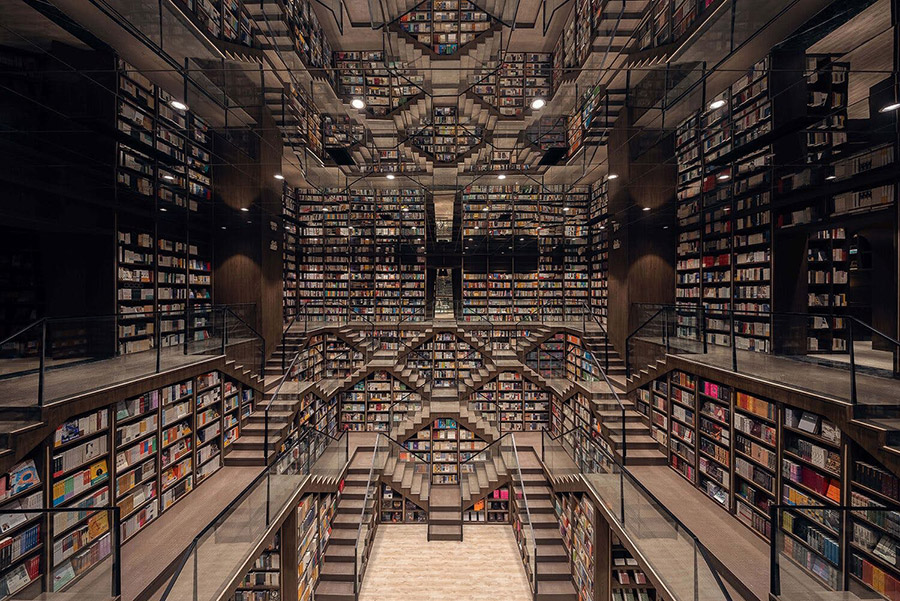
The project』s creative lead, X+ living founder Li Xiang references old libraries with the dark brown hues and floor-to-ceiling shelves evoking the feeling of centuries of study and toil among tomes of vellum and leather.
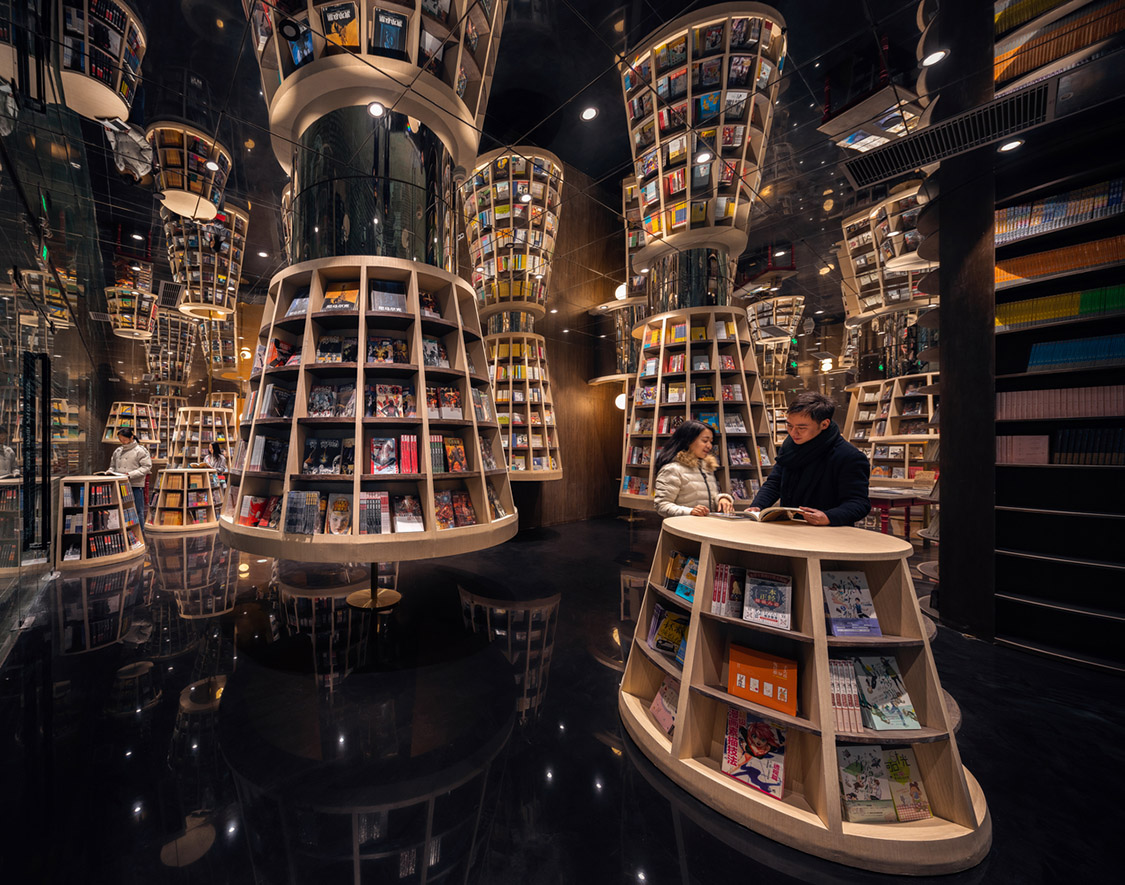
The designers also took cues from the shapes of Chinese lanterns and lamp shades. The most intriguing aspect of the space, however, are the stairs zig-zagging the walls of books.
Here the reference was the 1950s phenomenon, Penrose Stairs, also known as the Impossible Stairs, made more widely known by the Dutch artist/ scientist/mathematician M.C. Escher.
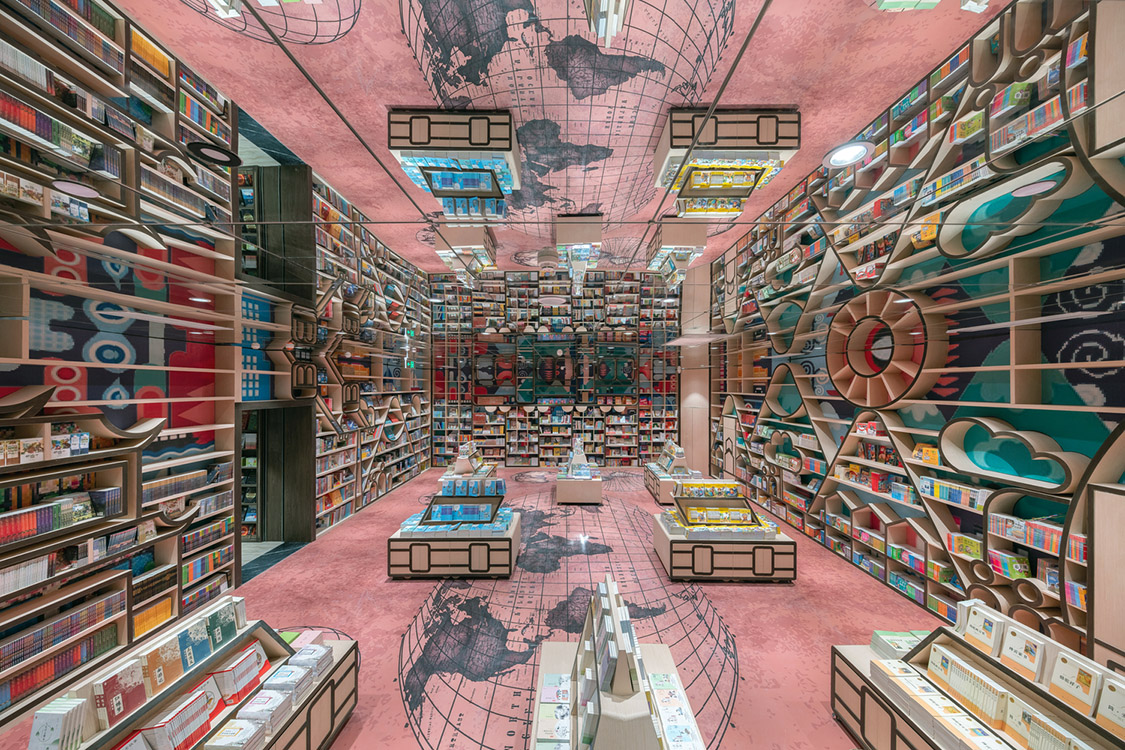
What makes this area of the store even more fantastical is the use of mirrors and reflecting surfaces that makes the space seemingly endless and turns things upside down. The lower-ceilinged reading nooks shut off all this and provide a peaceful respite from the mass and grandeur of the main space.

The saccharine children』s area also uses floor-to-ceiling shelving and mirrored ceilings to create a sense of expansion and infinity. Tuija Seipell.